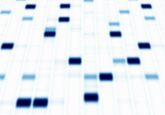Scientists develop rapid detection method for the Ebola virus

A team of scientists from the University of Albany (NY, USA) has developed a cost-effective detection method for Ebola. The study, published in Advanced Healthcare Materials, described the newly developed technique, which allows for real-time diagnosis by identifying associated virus biomarkers in urine samples through visual detection.
Ebola hit headlines in 2014, during the biggest outbreak of the virus known to date in Western Africa, killing over 11,000 people. During this time, one of the largest criticisms reported was the delayed response to the epidemic. The first cases of Ebola took 3 months to diagnosis; a contributing factor to the spread of the disease.
With the need for rapid diagnoses, scientists suggest that the new technique would be extremely helpful. The new technique identifies disease biomarkers in urine and then uses gold nanoparticles that detect the presence of the specific biomarkers; the sample turns red if infected and purple if not. This detection is then confirmed by absorbance spectroscopy.
One of the authors of the study, Mehmet Yigit (University at Albany) commented: “The current detection methods for Ebola, and other diseases, are costly, time-consuming and require sophisticated equipment. We are working to make real-time detection a reality. This will narrow the population who need to be tested through conventional methods.”
The team tested 25 urine samples, each spiked with Ebola-associated biomarkers. This method was proved to be highly sensitive and accurate, providing accurate results in 24 samples and allowing for the detection of 400 amols (24 × 106 molecules). The technique demonstrated no false-positive or false-negative responses. It is hoped that this technique can be extrapolated to detect other diseases, allowing for rapid diagnosis and treatment.
It is hoped that this technique can be extrapolated to detect other diseases, allowing for rapid diagnosis and treatment.
Sources: Balcioglu M, Rana M, Hizir MS, Robertson NM, Haque K, Yigit MV . Virus biomarkers: Rapid visual screening and programmable subtype classification of Ebola virus biomarkers. Adv Healthc. Mater. 6(2) (2017); www.albany.edu/news/76639.php




